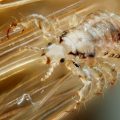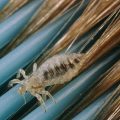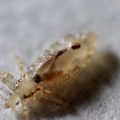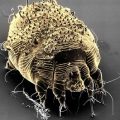Table of Contents
Pubic lice, also known as crab lice or “crabs” are tiny parasitic animals that live and lay eggs primarily in the pubic region of humans. An adult louse is oval in shape, yellow-white in color, and around 2mm long. It resembles a crab like appearance, which is why doctors sometimes call them crab lice. They can be extremely difficult to find, and they live firmly to the shaft of the pubic hair. Their eggs take around six to 10 days to hatch.
How One Can Acquire Pubic Lice
Unlike most skin conditions that lead to infection, public lice don’t have anything to do with poor hygiene. They can’t survive in the scalp.
Pubic lice can live without a human host, but because they depend on their host (human blood) to survive, they rarely leave the body of their host, unless the infested person will come in close contact with another person. They can’t jump or fly, so they crawl from hair to hair.
They can also be spread through coming in contact with the infested person’s bedding, clothing and towel that have been used by a person with pubic lice.
Signs and Symptoms of Pubic Lice
Symptoms of pubic lice infestation can be quite difficult to spot, and lice and eggs can be extremely difficult to find with a naked eye. This is the leading reason why many people don’t realize they’ve acquired the parasitic insect, and why many can unknowingly spread the infestation.
Also, it can take many weeks after the initial contact before the first signs and symptoms may appear. This includes:
- Itching in the affected areas (primarily in pubic region)
- Lice eggs (brow in color) in pubic or other body hair
- Underwear with powdery droppings (black in color) from lice
- Irritation in pubic area, which leads to inflammation caused by constant scratching
- Tiny dots of blood on skin
- Spot sky blue in color (disappears after a few days)
These symptoms are the same in both men and women.
Though they’re extremely tiny, some people may notice eggs, droppings, or the lice. Also, they keep still in the light. Some people can also see them move.
Doctors or nurses may notice pubic lice through medical examination, especially routine genital exam, even if they’re not intentionally looking for them. This is because they’re familiar with shape and nature of these tiny skin crawlers, and they know and have seen signs of infestation before.
How to Get Checked
If you suspect you have this, and you have observed some of the signs and symptoms mentioned above, then your best bet is to seek medical attention and have a medical professional (doctor or nurse) to take a closer look at it. Especially if you think you have been in contact with someone you suspect has pubic lice.
This is why most doctors will schedule another appointment later on.






 I love to write medical education books. My books are written for everyone in an easy to read and understandable style.
I love to write medical education books. My books are written for everyone in an easy to read and understandable style.